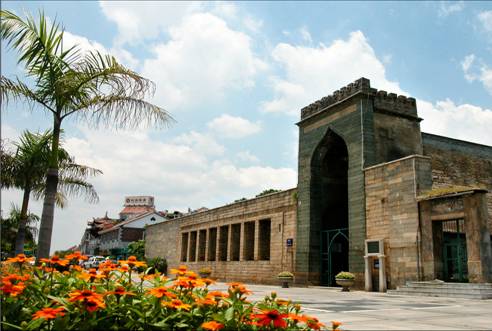

Apart from mobile cultural relics to be on display in the exhibition, immobile relics that have helped the city retain its distinctive religious culture over the past 300 years also abound. Religious institutions strewn around the city are regarded as its landmark buildings, seducing millions of travelers every year to admire.
Tumen Street is a well-beaten track as it is a complex of a wide range of religious buildings. Is it no wonder that Quanzhou was once dubbed as the Museum of World Religions by the UNESCO.
Qingjing Mosque, also known as Ashab Mosque, at the center of Tumen Street, was built and renovated by Arab Muslims. It was left behind by Arabic traders flooding in Quanzhou in Song Dynasty. Descendants of Muslim immigrants today still keep their culture alive while living in Quanzhou. Observation of fasting is a common sight during Ramadan month.
 |
|
Qingjing Mosque [Photo provided to chinadaily.com.cn] |